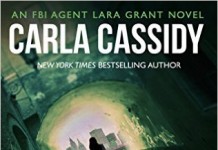 Tim Carmody at Snarkmarket points to a fascinating article at Triple Canopy on the pre-history of digital media, and the future of the book. It is an interview with Bob Stein, computer pioneer and the director of the Institute for the Future of the Book.
Tim Carmody at Snarkmarket points to a fascinating article at Triple Canopy on the pre-history of digital media, and the future of the book. It is an interview with Bob Stein, computer pioneer and the director of the Institute for the Future of the Book.
It covers a number of topics including his unsuccessful early effort to put the entire Encyclopaedia Britannica on a laserdisc (it turned out to be unreadable), how laserdiscs first got commentary tracks, and, well, the future of the book. I find the magazine-in-a-browser format a little annoying, but the content is fascinating enough to make up for it.
Stein ended up working with computer pioneer Alan Kay at Atari, and later starting the Criterion Collection before anyone even thought laserdisc was going to amount to anything. There are a lot of fascinating stories, and the tale of how the Criterion edition of King Kong became the first movie with a commentary track is really hilarious, but there is also a lot of fascinating stuff around the idea of digital books, too:
The book was always fundamental to me. One of the things I really liked was that the original logo for Criterion, which we designed in 1984, was a book turning into a disc. It was central. When I was writing the paper for Britannica, I felt like I had to relate the idea of interactive media to books, and I was really wrestling with the question “What is a book?” What’s essential about a book? What happens when you move that essence into some other medium? And I just woke up one day and realized that if I thought about a book not in terms of its physical properties—ink on paper—but in terms of the way it’s used, that a book was the one medium where the user was in control of the sequence and the pace at which they accessed the material. I started calling books “user-driven media,” in contrast to movies, television, and radio, which were producer-driven. You were in control of a book, but with these other media you weren’t; you just sat in a chair and they happened to you. I realized that once microprocessors got into the mix, what we considered producer-driven was going to be transformed into something user-driven. And that, of course, is what you have today, whether it’s TiVo or the DVD.
He also talks about the creation of the HyperCard editions of The Hitchhiker’s Guide to the Galaxy trilogy (which I actually remember seeing back in the early to mid ‘90s), Jurassic Park, and The Annotated Alice, three of the first ever commercially-produced e-books.
From there, he moved into CD-ROMs, creating some of the early CD-ROMs that helped drive the widespread adoption of CD-ROM drives for computers. “It’s exciting for me to realize that I published what in effect became the first DVDs, the first CD-ROMs, and the first electronic books. In all three media we were first.”
This is a really great story about the early days of e-publishing, and how it ties into other media. I never knew that the founder of the Criterion Collection was also responsible for some of the early innovations of e-books and multimedia. Very much worth reading.

































For those interested, and it is well done, the most recent podcast of thekindlechromicles.com by Len Edgerly features an interfview with Bob Stein.